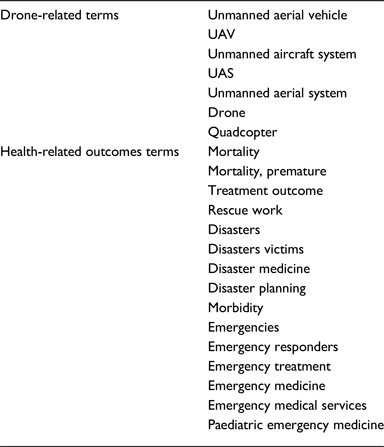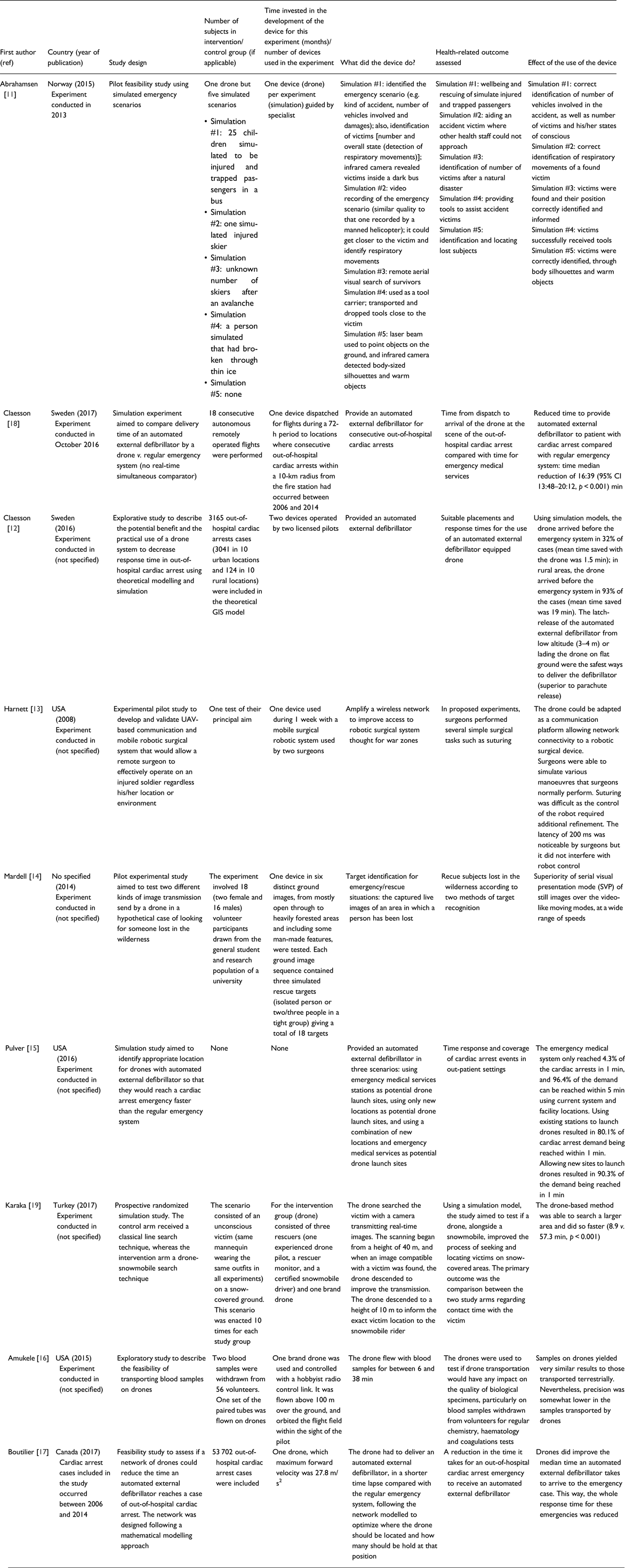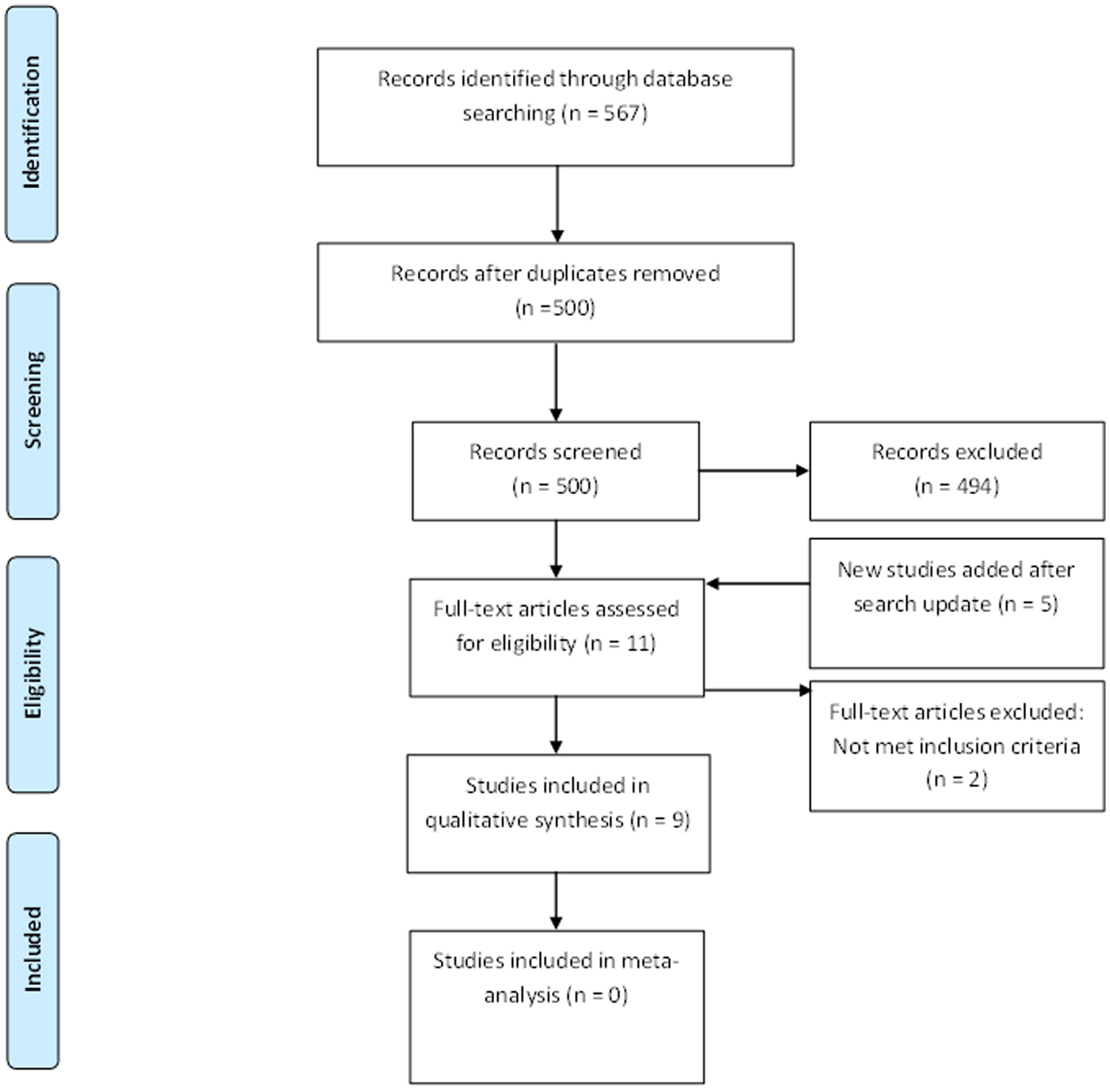Background
Different technologies have been evaluated as potential means to improve healthcare [Reference Labrique1, Reference Hall2]. For example, mobile health, or mHealth, has used mobile phones and short message services (SMS) with positive effects in several fields such as sexual health [Reference Burns, Keating and Free3], child and maternal health [Reference Lee4] and chronic conditions [Reference Hamine5, Reference Adler6]. Furthermore, reviews on the use of technology for patient monitoring and diagnostics, such as Telemedicine, suggest that they can be both acceptable for patients and cost-effective in healthcare delivery [Reference Davis7, Reference de la Torre-Diez8]. Although further studies are needed in order to improve the quality of scientific evidence on the use of these technologies [Reference Hall2], there is also a need to explore other technology-based solutions for situations and scenarios where healthcare needs surpass the applicability and functionality of mobile phones. In this line, unmanned aircraft vehicles (UAVs), including drones, can be used for various health purposes, from finding survivors after natural disasters to delivering medicines or providing care in emergency situations. Unlike the increasing body of evidence on the use of mobile phones for health purposes [Reference Hall2–Reference Adler6], to the best of our knowledge, no systematic review of the use of UAVs for health-related purposes has been published. Consequently, we intended to close this knowledge gap by conducting a systematic review to assess the potential usability of UAVs in healthcare. We aimed to assess experimental studies in which UAVs were used for health-related purposes, particularly in emergency situations. Thus, we sought to answer the research question: regarding health-related outcomes, what has been the use of drones?
Methods
Study design
This is a systematic review of the literature. PRISMA guidelines were followed (Online Supplementary Material 1) [Reference Liberati9, Reference Moher10], and the study was registered in PROSPERO (CRD42017072194).
Search
Studies were selected for this review if their population was men or women of any age, the intervention used UAVs and if they assessed any health-related outcome (e.g. survival or time to rescue injured patients). Because, to the best of our knowledge, this would be the first review about this topic, we did not target any specific comparison for the intervention. We only focused on experimental studies, either those conducted in real-life scenarios or simulation studies. Experimental studies (e.g. clinical trials) provide the strongest evidence to support the use of an intervention or treatment. Therefore, in an attempt to summarize the most robust evidence about the use of drones in health-related outcomes, we focused on this design alone.
The search was conducted in OVID including Embase (1974–2017), Global Health (1910–2017) and MEDLINE (1946–2017); we also searched in SciELO, Scopus and CINAHL. All database searches were conducted on 1 June 2017, except Scopus, which was conducted on 6 June. Following the initial search, new relevant articles were found on social media, so an updated search was conducted on 14 October (Ovid and Scopus) and 17 October (SciELO and CINAHL), 2017. No grey literature was searched.
Table 1 depicts the terms used for the search, which included drone-related and health outcomes terms. Drone-related terms were verified by an engineer with experience in drones. Online Supplementary Material 1 depicts the search conducted in OVID, CINAHL and Scopus.
Table 1. Search terms

Study selection
Results from each search engine were downloaded and duplicates were excluded. Then, all the results were divided in two groups, each of which was studied in terms of titles and abstracts by two researchers independently (RMC-L and AT-R; MM-P and AR-A). Discrepancies between the reviewers were resolved by a third reviewer (AB-O). After initial review, full text of selected studies was independently assessed by two reviewers (MM-P and AT-R). Again, discrepancies were resolved by a third reviewer (AB-O). Additional findings of the updated search were reviewed by one researcher (RMC-L) and verified by another one (AB-O).
Data extraction
Data extraction from each selected study was conducted by two reviewers independently (RMC-L and AR-A), and later revised by a third one (AB-O). Before information synthesis, a data extraction form was developed by the reviewers based on the research question (e.g. study design, intervention allocation and effect of the intervention); the data extraction form was not modified during information synthesis and all the information is depicted in Table 2. No further validation process of the data extraction form was conducted. Because all relevant information was available on the research papers, it was not necessary to request further details from the investigators of each selected study. To the best of our knowledge, no specific tools have been developed for risk of bias assessment of simulation studies; therefore, we were unable to assess the risk of bias in our review. Because we aimed to summarize the use of UAVs in healthcare, and we had anticipated a great heterogeneity among studies, a meta-analysis was not conducted. Nevertheless, if the selected studies presented any summary measures (e.g. risk ratio), these were summarized.
Table 2. Characteristics of the selected studies for systematic synthesis

Results
Study selection
In the initial search, 567 results were retrieved: none from SciELO, 18 from CINAHL, 192 from Ovid and 357 from Scopus. After duplicates were removed, 500 studies were included for initial scrutiny. Titles and abstracts from these 500 studies were examined and six were selected for full-text review. For systematic synthesis, five studies were selected (Fig. 1) [Reference Abrahamsen11–Reference Pulver15]. The updated search, conducted approximately 4 months afterwards, yielded no new findings from SciELO, but 10 additional titles from CINAHL, 31 from OVID and 29 from Scopus. Four of these new findings were assessed in full-text, and three were included for systematic synthesis [Reference Amukele16–Reference Claesson18]. Another article was identified after the updated literature search [Reference Karaca19]. Overall, after the two search rounds, nine studies (five from the original search, three from the updated search and one additional study) were selected for systematic synthesis and summarized in Table 2. Studies were excluded because they were a narrative review [Reference Baer20] or because they reported an experience using drones to deliver medicines (i.e. not experimental design) [Reference Gomperts21].

Fig. 1. Systematic Search Flow Diagram.
Study characteristics
All eligible studies were written in the English language, were published since 2008 with three in 2017 and conducted in high-income countries: one in Norway [Reference Abrahamsen11], two in Sweden [Reference Claesson12, Reference Claesson18], three in the USA [Reference Harnett13,Reference Pulver15,Reference Amukele16], one in Turkey [Reference Karaca19], one in Canada [Reference Boutilier17] and one did not have that information [Reference Mardell, Witkowski and Spence14]. Only one study had a control group with random allocation of the intervention [Reference Karaca19], thus we were unable to compare the studies in terms of study design. None of the studies used drones in real-life situations. All but one [Reference Claesson18] were published as original research articles. Further details about the studies’ characteristics are presented in Table 2.
Use of drones
Eight of the nine studies addressed an emergency situation; one evaluated the use of drones to transport blood samples [Reference Amukele16]. In four studies, drones were used in situations of out-of-hospital cardiac arrest (e.g. to transport a defibrillator in a timely manner) [Reference Claesson12, Reference Pulver15, Reference Boutilier17, Reference Claesson18]; in three reports, drones helped in locating lost or injured people (e.g. in the wilderness or snow-covered ground) [Reference Abrahamsen11, Reference Mardell, Witkowski and Spence14, Reference Karaca19] and one study used drones to improve wireless connection during surgical procedures in war zones [Reference Harnett13]. In all of the studies, the use of drones appears to provide better results than comparison methods. For example, in those addressing out-of-hospital cardiac arrest emergencies, drones improved the time at which a defibrillator was available at the emergency scene and reduced delays in emergency response. Further details about the interventions and outcomes assessed in the selected studies are summarized in Table 2.
Discussion
Summary of evidence
This systematic review was conducted using six search engines and found nine reports that studied the use of UAVs for health-related purposes. All the studies were conducted in high-income countries and none were conducted in real-life scenarios. The use of drones included delivering healthcare in out-of-hospital cardiac arrest emergencies, finding lost subjects after accidents or natural disasters, transporting blood samples and as enhancers of other wireless technologies.
The fact that all the studies were in high-income countries could be explained by technological limitations in low- and middle-income countries (LMICs). However, the emergency situations in which drones were helpful aides are not exclusive of high-income countries. In fact, natural disasters often have more devastating impacts in LMICs in terms of deaths and economic loss [22, 23]; suggesting that it may be helpful to test these technologies in LMICs.
Although drones have existed for several years, all the studies found in this systematic review were conducted recently as drones have undergone tremendous technological improvements [Reference Dalamagkidis, Valavanis, Piegl, Dalamagkidis, Valavanis and Piegl24], and a wider use for civil purposes is yet to come [25]. As these technologies become less costly [26], their use in health research will be increasingly affordable.
Most studies followed a simulation methodology, probably under ideal circumstances. However, there is a need to also study drones in real-life situations to identify and overcome potential issues that arise under unfavourable situations, both regarding the health outcome of interest and external factors. Additionally, future studies should take into consideration local regulations for flying drones (e.g. respect of private and public air space), as well as any potential ethical concerns (e.g. respect people's willingness to receive immediate care or wait for further assistance) [Reference Resnik and Elliott27]. Due to the innovative and constantly evolving nature of drone use, ethics committees need to be aware of what permissions or regulations there are to flight drones in the proposed study site, so that they can request and verify that all requirements are met.
Research and public health implications
Drones have been used in situations where they clearly represent an advantage, like accessing places rescue personnel may not be able to reach [Reference Abrahamsen11, Reference Mardell, Witkowski and Spence14, Reference Karaca19], or arriving faster when other means of transportation would have limitations [Reference Claesson12, Reference Pulver15, Reference Boutilier17, Reference Claesson18]. Other potential uses of drones could be to deliver medicines in rural sites with poor connection to cities, to collect environmental information for vector-borne diseases [28] and to measure air pollution [Reference Villa29]. Moreover, drones might be used for delivering pre-hospital medication (e.g. dual antiplatelet therapy) in suspected cases of myocardial infarction where ambulances would take longer than desired. Should drones be used to deliver medicines in rural areas or pre-hospital care in remote areas or where access is difficult, they could help to close health inequalities. Therefore, people who would otherwise face difficulties to access healthcare would have new (and potentially efficient) means to receive care.
Limitations
Limitations of this systematic review must be acknowledged. First, the instrument used to extract information from the retrieved studies was not validated. This could be a limitation because other important information from these studies could have not been herein presented. Notwithstanding, we believe this instrument extracted what was necessary to answer the research question. In addition, given the few retrieved results, we summarized as much information as possible, and because we did not conduct a meta-analysis or did not retrieve any trial studies, the extracted information shows the overall methodology and results of the selected studies. Furthermore, our findings are less prone to bias because we did not exclude any reports based on the available or extracted information, and all summarized information provide evidence to assess risk of bias in each independent study (e.g. study design and intervention allocation). Second, not including engineering search engines could have prevented us from finding other resources within the scope of this review. However, those missing articles published in engineer-specialized journals or conference proceedings, most likely, would have depicted the development of the device or other technical details, rather than their use for health purposes. It is most likely that experiences using drones in healthcare are published in biomedical journals, most of which are registered in the search engines herein used. Third, because of the research interest of this review, we focused on experimental studies. Given that we found a limited number of experimental studies, we recommend conducting a similar review though including descriptive literature. Fourth, we did not record reasons for exclusion while examining titles and abstracts, thus we cannot assess if we systematically excluded studies with a particular characteristic; however, it seems unlikely that this had introduced bias, because of the strict inclusion criteria we only included very specific studies (e.g. only experimental studies). Despite these limitations, this systematic review has assets too. First, to the best of our knowledge, this is the first systematic review addressing the use of drones in healthcare. Second, our search can be considered comprehensive as we included six search engines encompassing a wide range of literature.
Conclusions
In a systematic review to assess the use of unmanned aerial vehicles (e.g. drones) in healthcare, nine studies were identified and none used these devices in real-life situations. The outcomes pursued varied from finding lost people after natural disasters to providing immediate healthcare for cardiac arrest. This review shows that research on the use of unmanned aerial vehicles for health-related purposes is limited to simulation scenarios; also, this review did not find any studies from LMICs. However, the results also show that there is a growing interest in this topic.
Supplementary material
The supplementary material for this article can be found at https://doi.org/10.1017/gheg.2018.11
Acknowledgements
N/A.
Financial support
RMC-L and AB-O have been funded by the US National Heart, Lung and Blood Institute, National Institutes of Health, Department of Health and Human Services, under Contract Number HHSN268200900033C. RMC-L has received support as a research trainee from the Inter-American Institute for Global Change Research (IAI CRN3036). AB-O is a Research Training Fellow in Public Health and Tropical Medicine (103994/Z/14/Z) funded by the Wellcome Trust.
Competing interests
None.
Ethical standards
This is a systematic review of published literature. No human subjects participated in this study.




